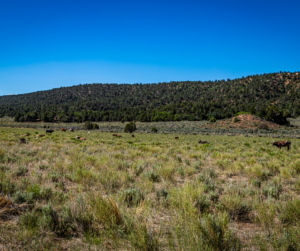Did you know that Texas 4-H has a Range Judging component? The AgriLife Extension Explore Handbook has everything you need to know and more on how to get involved in Texas 4-H Range Judging.
The range judging contest is a great opportunity for members to learn about rangeland ecology, practical application, and decision-making skills that are essential to range management. By preparing and participating in these contests, participants will become familiar with grasses, forbs, woody plants, different ecological sites, and the effects of grazing animals. They will also be introduced to the differences in plant types and how grazing affects plant growth. Learning these skills will not only be vital for a 4-H members career but also as they continue into higher education and their future careers.
The contest is broken up into three separate age divisions, Junior, Intermediate, and Senior. There are three separate parts to this contest which include, plant identification, range evaluation, and range health.
Section 1 – Plant Identification
In this part of the contest, participants will be asked to identify the plant by writing its common name and checking off its plant characteristics on the scorecard that is provided. It is important to note that plants are going to vary in stages of growth, so it is vital that all stages of plant growth be studied.
Section 2 – Range Evaluation
In this part of the contest, an area is staked and roped off. This area could represent an entire ranch, one or more pastures, or a small part of a pasture. There will be seven sections on the score card for the participant to complete including: degree of utilization, kind of site, successional stage, similarity index, vegetative state, recommended stocking rate, and management decisions. The coordinator of the contest will provide participants with conditions to consider when evaluating the selected plot. To prepare for this section, it is important to travel to practice contests and clinics to strengthen the skills needed for this section of the contest.
Section 2 – Rangeland Health
In this part of the contest, four square plots will be staked off and numbered as well as a reference plot. To determine the range health, the participant will make their selection based on the number of problem indicators that they observe.
Interested in learning more about this contest and how to get involved, get all the information here.
